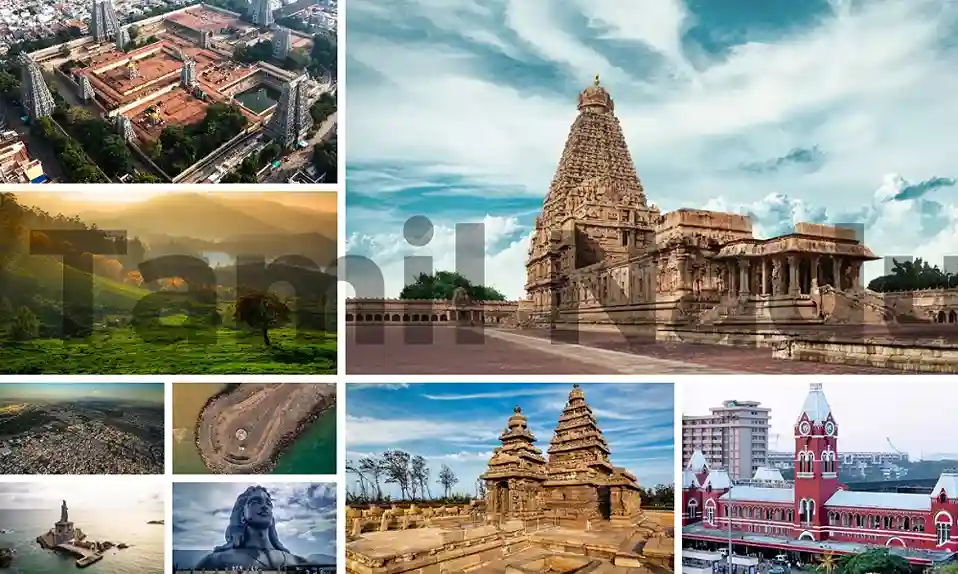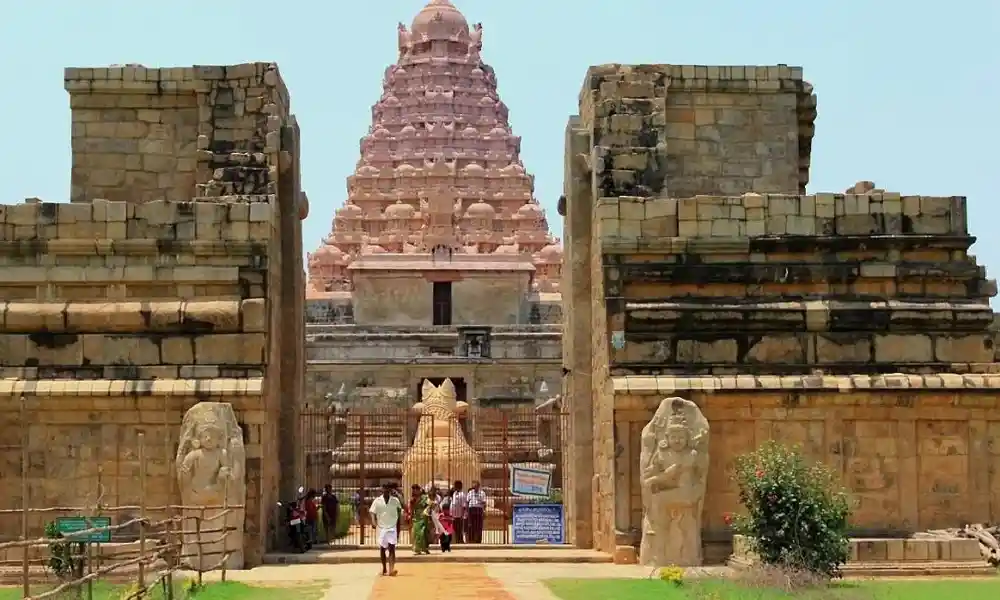Last Updated on 21/04/2025
This is what makes the grand Chola Temples that Raja Raja Chola I built at Thanjavur such a piece of living history. It’s a compendium of all the arts of sculpture, painting, architecture, as well as the allied ones of music, dance, jewelry, textiles, and bronze casting for the making of idols and temple vessels. There used to be a thousand or more temple dancers who regularly performed the daily ritual of worship at the Brihadeshwara Temple of Thanjavur in its heyday. It’s also an engineering marvel of its time. Of course, today, we tend not to notice the imposing height and enormous capstone that crowns Raja Raja’s edifice or mountain of dressed and carved stone, because verticality or gravity-defying buildings are no longer an issue. What’s striking is the exquisite attention to detail. You stare into the dark niches that surround the inner walls of the temple and come face to face with marvelous bronze statues.
Many of these have been relocated to the Thanjavur Art Gallery attached to the Thanjavur Palace. You climb into the inner corridors that have been created around the base of the main tower and come upon magnificent wall paintings that illuminate the glory of the King-Emperor or explain episodes in the lives of the Gods and Goddesses who live in the temple. There are other corridors in which the varieties of dance poses and their mudras (hand gestures) are enumerated, perhaps for a quick reference by the celebrated temple dancers. In those still, dark spaces illuminated with a mere torch, with the scent of camphor, sandalwood oil, and jasmine seeping through the crevices of the main sanctum, you can almost feel the presence of Raja Raja Chola himself. He was just one among a great family of builders. He set the trend amongst his immediate family, so that there are tributes in stone built by and for personalities like Sembiyan Mahadevi, the wife of his grand-uncle Gandaraditya Chola, that entices the visitor with their languid grace and immense beauty.
Those who are fortunate enough to follow in the trail of the Cholas, after visiting the Temple of Brihadeshwara, take the road to Gangaikonda Cholapuram. The name signifies that Raja Raja Chola’s son, Rajendra Chola I (1012-1044), a great conqueror and strategist, had marched his troops all the way up to the Ganges and brought the sacred water down to his capital in the Trichy district – creating his own version of a Shiva temple that is also called Brihadeshwara. It’s not quite as grand as the first, but the enormous figures carved in their separate niches, some of which are said to represent the king venturing into other lands with his armies, are still impressive.
His influence can be traced to Sri Lanka, Burma, Cambodia, Thailand, and the kingdom of Srivijaya in what are now parts of the Malaysian peninsula and some of the major islands that make up Indonesia. The smaller, but still exquisite, temple at Darasuram, built by Raja Raja Chola II (1146-1173), is full of finely carved pieces of sculpture in polished black stone, which forms a striking contrast to the granite of the niches surrounding the main structure. The main porch incorporates the suggestion of a chariot pulling the temple forward, much like the style of the Konark Sun Temple.
The contact with these different cultures meant a great flowering of ideas between the rulers of the Chola Empire and their distant neighbors. It lingers in the most tantalizing of ways in the telling of legends that speak of merchants and princes being shipwrecked in strange lands only to be rescued by princesses described as belonging to exotic tribes, quite often referred to as Nagas, or in textile traditions that have survived through the centuries in certain motifs and weaves. More dramatically, it can be seen in the temples still standing, carved with dreaming spires enclosing any number of different gods and their representatives, the God-kings on earth.
At such moments, it seems as if the golden age of Raja Raja Chola I continues to spread its radiance.
The Wonders of Tamil Nadu

The capital city of Chennai is home to Fort St. George, Marina Beach, and Guindy National Park. The spiritually inclined can visit the Kapaleeshwarar Temple, Parthasarathy Temple, and the San Thome Basilica.
When in Kanyakumari, one can enjoy the beautiful sunrise and sunset from the Sangam (the confluence of the Bay of Bengal, Indian Ocean, and the Arabian Sea). The Vivekananda Rock Memorial and the adjoining temple are the main tourist attractions here.
Udhagamandalam, formerly known as Ooty, is one of India’s most famous hill stations. The Botanical Garden, St. Stephen’s Church, and the Government Museum are places of interest here.



 Call
Call WhatsApp
WhatsApp Enquiry
Enquiry